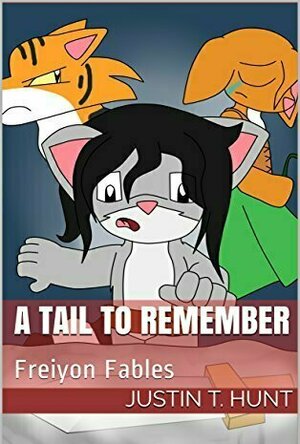
Animal sounds kids piano
Education and Entertainment
App
Does your child like music and animals? This kids piano app will provide fun and entertainment for...

Drôles d'animaux de A à Z
Book and Education
App
Un abécédaire animalier haut en couleur, en musique et en truculence. Un livre familial et...

Phone for Play - Creative Fun
Education and Games
App
~~> The largest collection of fun educational activities in a single app! ~~> Top #1 Education app...

A+ Lifestyle For Men Magazine - Men's Magazines
Lifestyle and Magazines & Newspapers
App
**FREE Download & FREE Trial. Get Up To 60 DAYS Of Free Trial!** **Get Instant Access To 7 Issues...
Lee (2222 KP) rated The One and Only Ivan (2020) in Movies
Sep 2, 2020
There were no talking animals in the real version of events this is based on, but there was a silverback gorilla named Ivan,
Stolen as an infant from the rainforests of Congo and made to live in a tiny cage, while regularly putting on a show for visitors to a shopping centre for 27 years in total. This being a Disney movie though, the cruelty of that is glossed over somewhat, with funny animal friends with wacky voices aiming to brighten things up. Although, the message that his captivity was wrong is certainly there for all to see, and hopefully to be appreciated.
Bryan Cranston is Mack, the showman responsible for raising Ivan and making him a star, bristling when enthusiasm and “the show must go on” spirit, despite dwindling audiences and occasional animal illness. From flashbacks, it’s clear that Mack loves Ivan, his passion for raising him having cost him his marriage. But now that Ivan is the star of the show at the mini circus in the mall, complacency has set in, and Mack cannot see that all Ivan now truly wants is his freedom.
In an attempt to try and bring in the crowds, Mack brings in a baby elephant, which takes over top billing status from Ivan, much to his disappointment. Elderly elephant Stella (Angelina Jolie) takes the new baby under her wing, and during some late night storytelling sessions between the animals, we learn that Ivan had a sister back in the jungle, and was actually a budding artist, using mud to paint on rocks. When Julia, young daughter of one of the helping hands at the circus, gives Ivan some of her old crayons and finger paints, Ivan begins drawing again, and is soon moved back up to top billing in the show.
When I first saw the trailer for The One and Only Ivan, I was totally on board. That is, until the animals started talking. I thought the CGI remake of The Lion King last year was just terrible, and the Lady and the Tramp remake which landed on Disney+ earlier this year was even worse. Realistic looking animals simply cannot convey emotions like their traditionally animated counterparts, while retaining their realistic looks. But The One and Only Ivan thankfully feels so different, much better than those movies do. And a lot of that is down to the voice cast.
Sam Rockwell is Ivan. Perfectly cast, he brings a real much needed gravitas to the sombre silverback. Along with the stray dog (Danny DeVito) that visits Ivan’s cage and sleeps on his belly at night, they form a delightful double act, discussing freedom, and the fortunes of the circus. With a lot of time being spent with the animals in their cages, the movie does drag a little at times, but then maybe that’s the whole idea – portraying the solitude and boredom experienced when you do not have your freedom.
As if it wasn’t already clear enough, The One and Only Ivan nicely drives home the important message that animals really shouldn’t be kept in pokey cages for long periods of time, and certainly not for decades either. The end of the movie reminds us that Ivan’s story is actually based on truth, as we’re shown photos of the real Ivan, who stayed with a family before becoming a circus act. Seeing the photos of his eventual release to the vastly improved setting of Atlanta zoo, where he lived out the rest of his days, certainly proves to be very emotional, and a fitting end to a surprisingly enjoyable family movie.

Phone for Play: Full Version
Education and Games
App
~~> The largest collection of fun educational activities in a single app! ~~> Top #1 Education app...

Fiete Cars
Education and Games
App
In Fiete Cars the children are the master builders. In this app kids can create their own car game....
Night Reader Reviews (683 KP) rated Freiyon Fables: A Tail to Remember in Books
Jan 9, 2020
In A Tail to Remember a squirrel by the name of Micklang escapes from a zoo and in the process is electrocuted, giving his tail a lightning-bolt shape. He then falls into another world in an Alice in Wonderland – down the rabbit hole style. In this new world, Micklang receives dreams about his warrior-self telling hi how to become that version of himself. During his journey, Micklang makes some surprising new friends and is reunited with some he has met before in the human world. It is with these friends that Micklang travels this new world, mapping it out.
At one point Micklang comes across an island where his traveling companions are captured and must rescue them before their captors harm them. Then after abandoning ship in a bad storm Micklang finds himself on yet another island, but this one is home to only other lightning-tail animals. Towards the end, Micklang goes back to one of the first islands that he visited in this new world, now called Freiyon. It is there that Micklang and his friends fight in the first battle in a war between The Grabbers and King Karel. It is during this battle that Micklang’s story ends but it is not the end of the stories about Freiyon. This is because a little human boy is told about Freiyon by his mother and decides it is time for him to visit this land of talking animals.
What I liked best about this book is that it is a rare occasion when I can honestly say that the ending, specifically the Epilogue is my favorite part. The epilogue tied the entire story together with the prologue when frankly I originally was confused about how it all connected. This actually redeemed the entire book in some ways. What I did not like was that the talking animals and being in a different world or realm gave the book a Chronicles of Narnia feel. Normally that would be a good thing but in this case, the writing style felt simplified and rushed at the same time. Also, this book felt like it was intended for children up until book three. In Book Three: The Switch Between Stories the phrases “What the HELL” and “how the HELL” were both used and that doesn't feel kid-friendly.
It was hard for me to pick a target audience for this book. My best guess would be for early middle school students and late elementary students, age-wise anyway. This is because the length might make it difficult for some elementary students (and some parents may not be thrilled about all the violence, who knows). Yet the simplified writing style may (or may not) appeal to older readers. Most likely it would be dry and boring for anyone out of middle school. That being said I rate this book a 2 out of 4. This is because this story falls in that dangerous zone between being simple enough for young readers and having just enough detail to feel rushed. The action moves from one major event to another without much of a break in between yet the story is still interesting
https://www.facebook.com/nightreaderreviews

Radio Greece
Music and Social Networking
App
The best radio application Radio Greece is the simplest and most powerful application. Features: ...
Purple Phoenix Games (2266 KP) rated Dinosaur Island in Tabletop Games
Jun 12, 2019
In Dinosaur Island, you have successfully created a theme park of the Jurassic variety (see what I did there?), and are now tasked with managing and supervising the day-to-day operations. Think “Zoo Tycoon” on steroids. You have to collect new DNA, upgrade your facilities, build new attractions, hire specialists, oversee your workers, and create new dinosaurs to populate your park! Make sure you manage your resources wisely for maximum benefit, and keep a close eye on the security of your park to ensure the safety of your guests! The goal is to create and maintain the most successful dinosaur park!
DISCLAIMER: An expansion exists for Dinosaur Island, and I do own it, but I have yet to incorporate it into my games. Once I get some experience with the expansion, I will either amend this review or address it in a separate post! -L
Let me first begin this review by saying that there is A LOT going on in this game. Seriously, a lot. And it can be pretty overwhelming at first. But one thing I cannot praise enough about Dinosaur Island is its rulebook. It’s kind of hefty, but it is so detailed and clear (with numerous examples) that I understood how to play the game on my first read-through. And sometimes with games that have so many moving elements, total understanding from the get-go can be rare, for me especially. The excellent rulebook makes a seemingly daunting game not so scary. I always keep the rulebook on hand when I play (just to be safe!), but once I got the hang of all of the steps, I don’t really need to refer back to it anymore!
As a solo game, Dinosaur Island plays very similarly as it does in group play with a few minor differences. For one, no regular Objective cards are used – instead you use a set of specified Solo Objective cards. Next, to simulate player interaction during the Research and Market Phases, the solo player draws a card from an AI deck and eliminates the options/discards the resources listed on the card – this mimics group play in the sense that turn order changes every round and you do not always get your first pick during these phases. The remaining 2 Phases (Worker and Park) occur simultaneously and involve no player interaction, so those are played as normal. One final difference between group and solo play is that the solo player can choose to play without Plot Twist cards. A solo game is played over the course of 7 total rounds, and the overall goal of the game remains the same – amass the most Victory Points.
The trickiest part of playing Dinosaur Island solo, for me, has to do with the Solo Objectives. You have 7 Solo Objectives to be completed throughout the game, and they reward Victory Points based on the round in which they were completed – finishing objectives in earlier rounds yields a higher number of points. If you are unable to complete any objective in a given round, you must discard one (of your choice) at the end of that round. The hard thing is that depending on which objectives are currently in play, it can be difficult to complete one each round to earn those points. Some things take time (and a couple of rounds) to be able to complete – like “Reach a threat level of 15.” If you have multiple long-term objectives in play, they can really limit the number of points you can earn from them. A nice mix of objectives (both short-term and long-term) can help balance out the game a little more, but it’s ultimately a luck of the draw.
One positive thing I can say about the objectives, though, is that they really force you to come up with a multi-faceted strategy. Depending on which objectives are in play, you have to decide on a logical strategy and order in which to complete them for maximum points. You can’t just focus on one objective – you also need to be setting yourself up to complete future objectives. I never feel like I’m just going through the motions because I always need to be thinking ahead to my future rounds.
The thing I really like about Dinosaur Island as a solo game is that it is still extremely engaging. I’m not a huge fan of “Beat your own personal best” solo games, but this one keeps me so involved that I don’t mind the fact that there’s no real ‘winner.’ Since a group game doesn’t involve that much player interaction anyway, Dinosaur Island doesn’t really even necessarily feel like a solo game. Every play requires a different strategy, and that makes it feel like a new game every time. If you enjoy Dinosaur Island in a group setting, give it a try as a solo game. There’s really not much of a gameplay difference, and I think you’ll enjoy it just as much!
https://purplephoenixgames.wordpress.com/2019/05/21/solo-chronicles-dinosaur-island/


